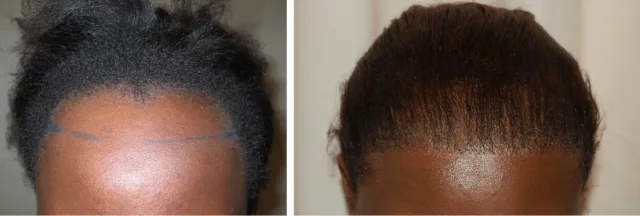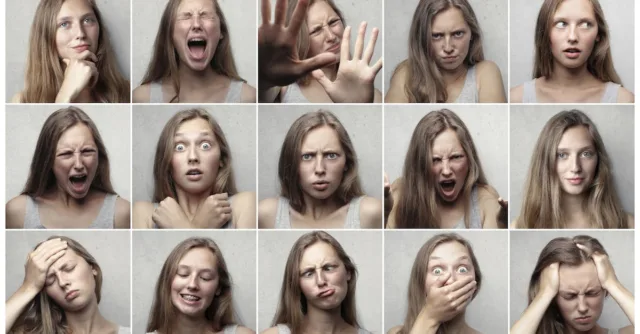Retention is a term used by dentists and is defined as “the holding of teeth following orthodontic treatment in the treated position for the period of time necessary for the maintenance of the result.”
Most patients treated orthodontically expect a perfect smile for life. There is no doubt that teeth after an active orthodontic treatment have a tendency to move back to the previous position at any age. That is why we Orthodontists need to provide the best suitable retainer for our patients.
Orthodontic retainers are made to be worn after orthodontic treatment, however they can’t move teeth or straighten them. Their functions are necessary in order to maintain teeth in their correct position and minimize any relapse.
The rationale for retention includes reorganization of the tissue, minimizing changes caused by growth and allowing neuromuscular adaptation to the corrected tooth position. I would like to emphasize that retention protocols are case specific in that I take different factors into consideration when deciding on the type of suitable retainers.
These factors include the patient’s age, oral hygiene, type and severity of initial malocclusion, growth potential, and patient compliance, and last but not least, patient preference.
Many forms of retainers are used in orthodontic treatment.
Bonded retainers, Removable retainers (Hawley Retainer), Vacuum-formed clear plastic retainers are the most commonly used. Fixed retainers and removable retainers don’t have superiority to each other.
Every type of retainer has its own purpose along with its potential advantages and disadvantages. The design and type of the retainer is case specific so the orthodontist should choose wisely accordingly to the patient’s needs.
We sometimes use dual retention using fixed retainers, backed up with a removable retainer at night. This ensures that if a fixed retainer is partially debonded, the teeth can be maintained in position temporarily.
You might be wondering how to take care of an orthodontic retainer. Caring for your retainer starts with identifying which kind you have. It is essential that you have a clear understanding of how to look after the retainers.
What are the types of retainers?
1) FIXED RETAINERS
A fixed retainer is a customized wire that is bonded to your lingual surface of frontier teeth. They are invisible to the outside observer. It is mostly used in the lower arch but sometimes we use fixed retainers for upper front teeth as well. The retainer sits inside your mouth, against your teeth to prevent the teeth from moving.
It is fixed so you cannot remove it nor damage it during cleaning.
As a reminder to all, wearing a fixed retainer means you have no food restrictions except biting corn on the cob or biting hard fruits like apples.
I would like to emphasize the importance of cleaning, because in general, fixed retainers have a tendency to accumulate bacteria, plaque, and tartar. They have the potential to cause both periodontal disease and caries unless they are well maintained, being properly cleaned. Just like you brush your teeth every day, it is important to brush and clean your retainer every time you brush your teeth with your toothbrush.
Additionally, I always recommend either using interdental brush or floss daily after brushing to keep the environment clean between contact points of two adjacent teeth.
Both Hawley and clear plastic retainers are customized appliances and they can be removed from your mouth for daily cleaning. This is easier for oral hygiene. They are capable of being worn part-time if necessary. These are the main benefits of the removable retainers.
The main drawback is that you need to remember to wear it. If you do not wear it properly your teeth will move back towards how they were before treatment in time. Removable retainers only need to be worn at night. You should wear it every night until your orthodontist advised to stop, because we now know that teeth move all throughout our life.
The longer you retain your teeth, the longer their stability lasts. If you do forget, then wear the retainer full-time except meals and drinks for 2 days then you can go back to your routine. If you cannot wear your retainer or if you lost/broke it, please contact us.
Here come the tips for you to keep your removable retainers clean and healthy at all times.
Make sure you clean your retainer under running lukewarm water as soon as you remove it from your mouth, while it is still wet. This will make it easier to clean off any debris before it hardens. I recommend an additional soft toothbrush for brushing out your retainer with lukewarm water with a non-abrasive toothpaste.
It is a good idea to brush your teeth at this time as well. You should never eat or drink when you are wearing the retainers. I would like to emphasize the importance of sleeping with clean retainers. Brushing out teeth and retainers before sleeping is the most important step in your daily cleaning process.
For deep cleaning, I recommend soaking your retainer once a week in a denture or retainer cleaner tablets like Polident or Invisalign Cleaning Crystals. If the Crystals are recommended to be soaked, mix a cup of lukewarm water with one tablet of cleaner and follow the package instructions for timing. Always clean them under running lukewarm water afterwards before putting them into teeth.
Also, make sure to clean your retainer case regularly. Try cleaning it once a day before you put your retainer away. Gently scrub all surfaces of it in warm, soapy water. Then rinse it off and pat to dry.
There is no consistency on the duration of a retention period. Generally, fixed retainers are worn for a lifetime. On the other hand, wearing a removable retainer depends on the age you finish your orthodontic treatment and your initial malocclusion.
Although, removable retainers only need to be worn at night. In some cases, they are worn constantly for the first 6 months. After completing 6 months, you should wear it every night until your orthodontist suggests not to.
We know that our teeth move all throughout our life. The longer you retain your teeth, the longer their stability lasts. Complying with your Orthodontist’s instructions is very important for the removable retainers!
However, extended wear of retainers is not free of failures and adverse effects.
Depending on the type of retainer, failures can range from breakage of the removable retainer to fracture of the wire. Detachments of bonded retainers from an individual tooth are relatively easy to fix. However, if the retainer wire is broken down from several/all teeth then it needs to be renewed.
Regardless of the location and severity of the failure, repair is required because it can promote plaque accumulation, discoloration, caries or undesirable tooth movement. Sometimes, the tooth detached from the fixed retainer can move. If this is not rebonded, this will cause aesthetic problems such as crowding rotations which requires retreatment.
Thus, periodic check-ups of retainers during the retention period are necessary. Those problems can be easily detected during your regular dental or hygiene appointments. Hygienists should refer the patients to the orthodontists or general dentist if the fixed retainer has broken or became loose.
I also recommend Orthodontist retention checks yearly. This is a kindly reminder that your removable retainer should be with you during the check-up appointment. Even if it is broken down, we need to examine your retainer to get them adjusted or replaced if needed.
I hope this answers your questions in a basic and understandable way.
To get your new smile, discuss your case with me or with your orthodontist and maintain dental health for the future.




